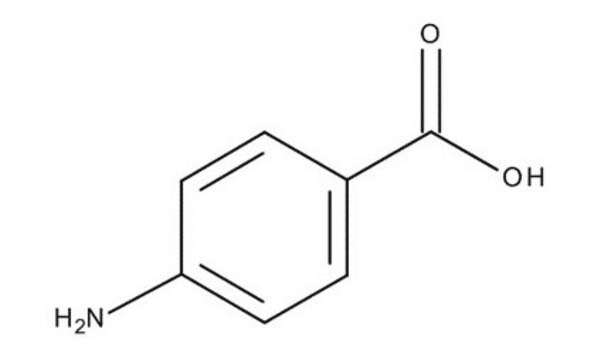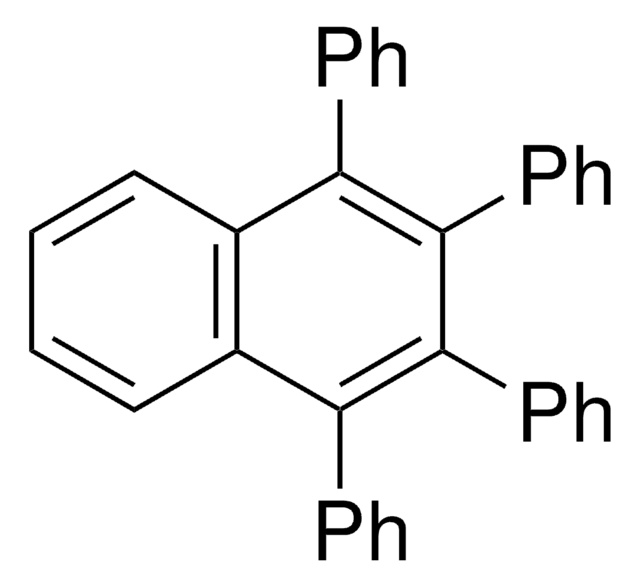8.20112
Anthranilic acid
for synthesis
Synonyme(s) :
Anthranilic acid, 2-Aminobenzoic acid
About This Item
Produits recommandés
Pression de vapeur
0.001 hPa ( 52.6 °C)
Niveau de qualité
Pureté
≥99.0% (acidimetric)
Forme
solid
Température d'inflammation spontanée
>530 °C
Puissance
4550 mg/kg LD50, oral (Rat)
Pf
146-148 °C
Température de transition
flash point 150 °C
Solubilité
4.5 g/L
Densité
1.383 g/cm3 at 23 °C
Masse volumique apparente
500 kg/m3
Température de stockage
2-30°C
InChI
1S/C7H7NO2/c8-6-4-2-1-3-5(6)7(9)10/h1-4H,8H2,(H,9,10)
Clé InChI
RWZYAGGXGHYGMB-UHFFFAOYSA-N
Catégories apparentées
Application
- Anthranilic acid in bio-imaging: Anthranilic acid produced by Virgibacillus salarius MML1918 was characterized for its potential in bio-imaging applications, demonstrating utility in visualizing biological processes (Nandhagopal and Narayanasamy, 2024).
- Anthranilic acid as a metabolite biomarker: A study utilized targeted metabolomics to identify anthranilic acid as a biomarker in Salmonella enteritidis-contaminated chickens, enhancing detection and safety measures in food chemistry (Chen et al., 2023).
- Anthranilic acid in metabolic pathway analysis: A comparative study on the kynurenine pathway in cell lines incorporated anthranilic acid, utilizing LC-MS/MS-based targeted metabolomics to explore selective inhibition of indoleamine and tryptophan 2,3-dioxygenases (Villani et al., 2024).
- Anthranilic acid in quantitative metabolomics: Liquid chromatography-tandem mass spectrometry was used for the simultaneous quantification of tryptophan, serotonin, and kynurenine pathway metabolites, including anthranilic acid, in various biological samples, aiding in comprehensive metabolic profiling (Frobel et al., 2023).
Remarque sur l'analyse
Melting range (lower value): ≥ 144 °C
Melting range (upper value): ≤ 147 °C
Identity (IR): passes test
Mention d'avertissement
Danger
Mentions de danger
Conseils de prudence
Classification des risques
Eye Dam. 1
Code de la classe de stockage
11 - Combustible Solids
Classe de danger pour l'eau (WGK)
WGK 1
Point d'éclair (°F)
302.0 °F - closed cup
Point d'éclair (°C)
150 °C - closed cup
Certificats d'analyse (COA)
Recherchez un Certificats d'analyse (COA) en saisissant le numéro de lot du produit. Les numéros de lot figurent sur l'étiquette du produit après les mots "Lot" ou "Batch".
Déjà en possession de ce produit ?
Retrouvez la documentation relative aux produits que vous avez récemment achetés dans la Bibliothèque de documents.
Les clients ont également consulté
Notre équipe de scientifiques dispose d'une expérience dans tous les secteurs de la recherche, notamment en sciences de la vie, science des matériaux, synthèse chimique, chromatographie, analyse et dans de nombreux autres domaines..
Contacter notre Service technique











